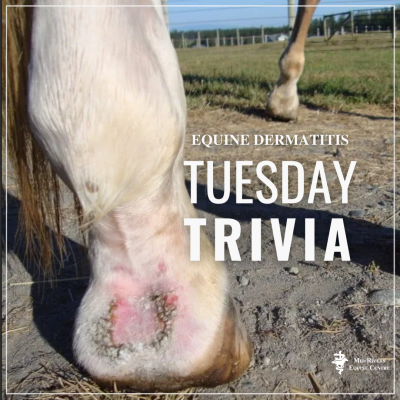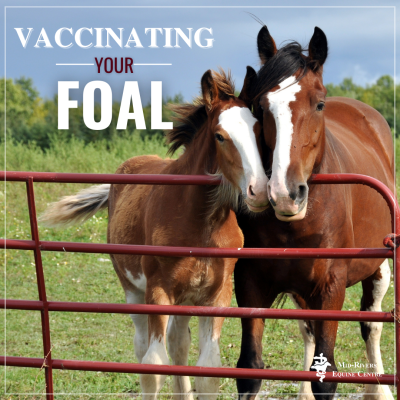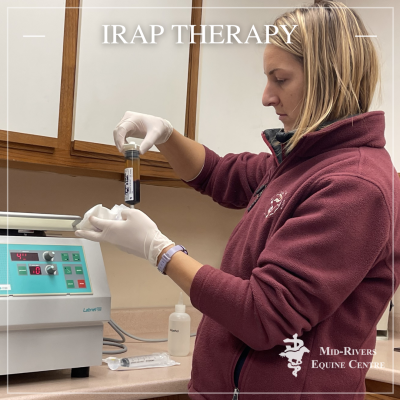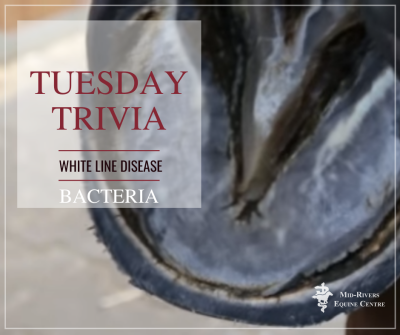FAQs
A horse would do well to have one week of rest for every day they ran a fever. However, if complications arise or secondary bacterial infections occur, rest recommendations are likely to be extended by your primary care veterinarian.
 Yes, but only AFTER you’ve softened the scabs. Apply an ointment directly to scabs and let it sit. When scabs become pliable, you can gently remove them. Then follow your primary care veterinarian’s instructions for ongoing treatment.
Yes, but only AFTER you’ve softened the scabs. Apply an ointment directly to scabs and let it sit. When scabs become pliable, you can gently remove them. Then follow your primary care veterinarian’s instructions for ongoing treatment.
Avoid aggressive scrubbing or picking of crusty dry scabs – it is painful.
An important key to resolving scratches is housing the horse in a clean, dry environment. Modifying the living situation until the infection is under control may be necessary.

 Yes. IRAP and Shockwave are both forms of regenerative medicine yet, they serve unique functions. IRAP blocks damaging proteins while Shockwave stimulates stem cells. Using them in conjunction can improve sport injury outcomes for horses.
IRAP is a protein derived from the horse’s blood and is injected into a damaged join. The therapy servers to block harmful and destructive inflammation proteins from binding to receptors. It effectively and naturally reduces inflammation, and its subsequent damage, by breaking the infinite loop of inflammation – joint damage – further inflammation.
Shockwave is a sudden burst of energy directed at damaged tissue. A hand-held trode is placed over the injury and delivers a series of focused pressure waves. The size, strength, and depth of the wave is adjustable, allowing the veterinarian to pinpoint the therapy directly to the damaged soft tissue. The treatment stimulates the release of growth factors that drive stem cells to damaged tissue, restoring integrity and function with minimal scar tissue.
 Foals should begin receiving their first core vaccinations at 6 months of age. The American Association of Equine Practitioners (AAEP) recommends tetanus, Eastern/Western Equine Encephalomyelitis (EEE/WEE), West Nile Virus, and Rabies. Help keep your vaccine schedule on track by downloading AAEP’s complete Foal Vaccination Cart with expanded details, booster timelines, and information on risk-based vaccines at AAEP .
Foals should begin receiving their first core vaccinations at 6 months of age. The American Association of Equine Practitioners (AAEP) recommends tetanus, Eastern/Western Equine Encephalomyelitis (EEE/WEE), West Nile Virus, and Rabies. Help keep your vaccine schedule on track by downloading AAEP’s complete Foal Vaccination Cart with expanded details, booster timelines, and information on risk-based vaccines at AAEP . Harvesting IRAP is relatively straightforward. Blood is collected in a syringe with unique glass beads and left to incubate for 24 hours, leaving the white blood cells to produce massive amounts of anti-inflammatory Interleukin-1 Receptor Antagonist Protein (IRAP). After which, the blood is spun down in a centrifuge where it separates red blood cells, plasma, and platelets. (Here, veterinary assistant, Elle, is removing a blood specimen from the centrifuge to harvest the IRAP serum.) The IRAP protein is in the clear yellow serum that rises to the top of the tube, making it easy to decant (separate) off. A single blood sample can produce 3-6 doses of IRAP. After an initial treatment, any remaining samples are frozen for subsequent treatments. (Learn more: IRAP Therapy – Treating Degenerative Joint Disease.)
Harvesting IRAP is relatively straightforward. Blood is collected in a syringe with unique glass beads and left to incubate for 24 hours, leaving the white blood cells to produce massive amounts of anti-inflammatory Interleukin-1 Receptor Antagonist Protein (IRAP). After which, the blood is spun down in a centrifuge where it separates red blood cells, plasma, and platelets. (Here, veterinary assistant, Elle, is removing a blood specimen from the centrifuge to harvest the IRAP serum.) The IRAP protein is in the clear yellow serum that rises to the top of the tube, making it easy to decant (separate) off. A single blood sample can produce 3-6 doses of IRAP. After an initial treatment, any remaining samples are frozen for subsequent treatments. (Learn more: IRAP Therapy – Treating Degenerative Joint Disease.)
 White Line Disease is caused by spore-forming bacteria. To date, twenty-two different types of fungal spores have been identified. The condition occurs when pathogens invade a weak or compromised hoof wall where they deteriorate the non-pigment portions of the horn wall.
White Line Disease is caused by spore-forming bacteria. To date, twenty-two different types of fungal spores have been identified. The condition occurs when pathogens invade a weak or compromised hoof wall where they deteriorate the non-pigment portions of the horn wall.
Radiographs confirm a diagnosis of white line disease by capturing the presence of gas trapped in the hoof wall. Treatment includes removal of the diseased hoof wall, allowing oxygen to reach and kill the bacteria.
The disease is often associated with laminitis.